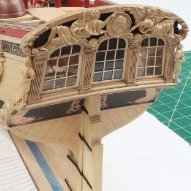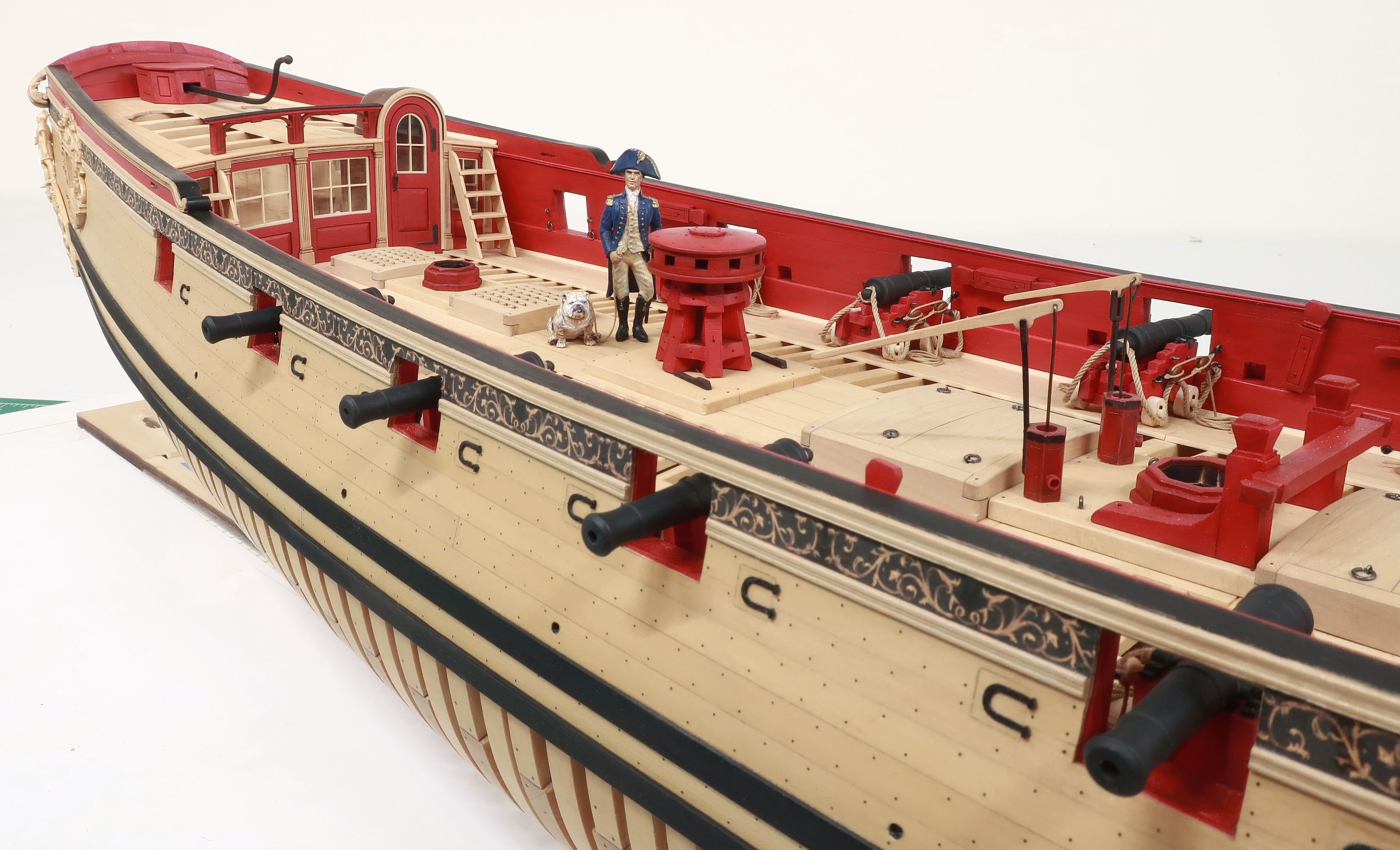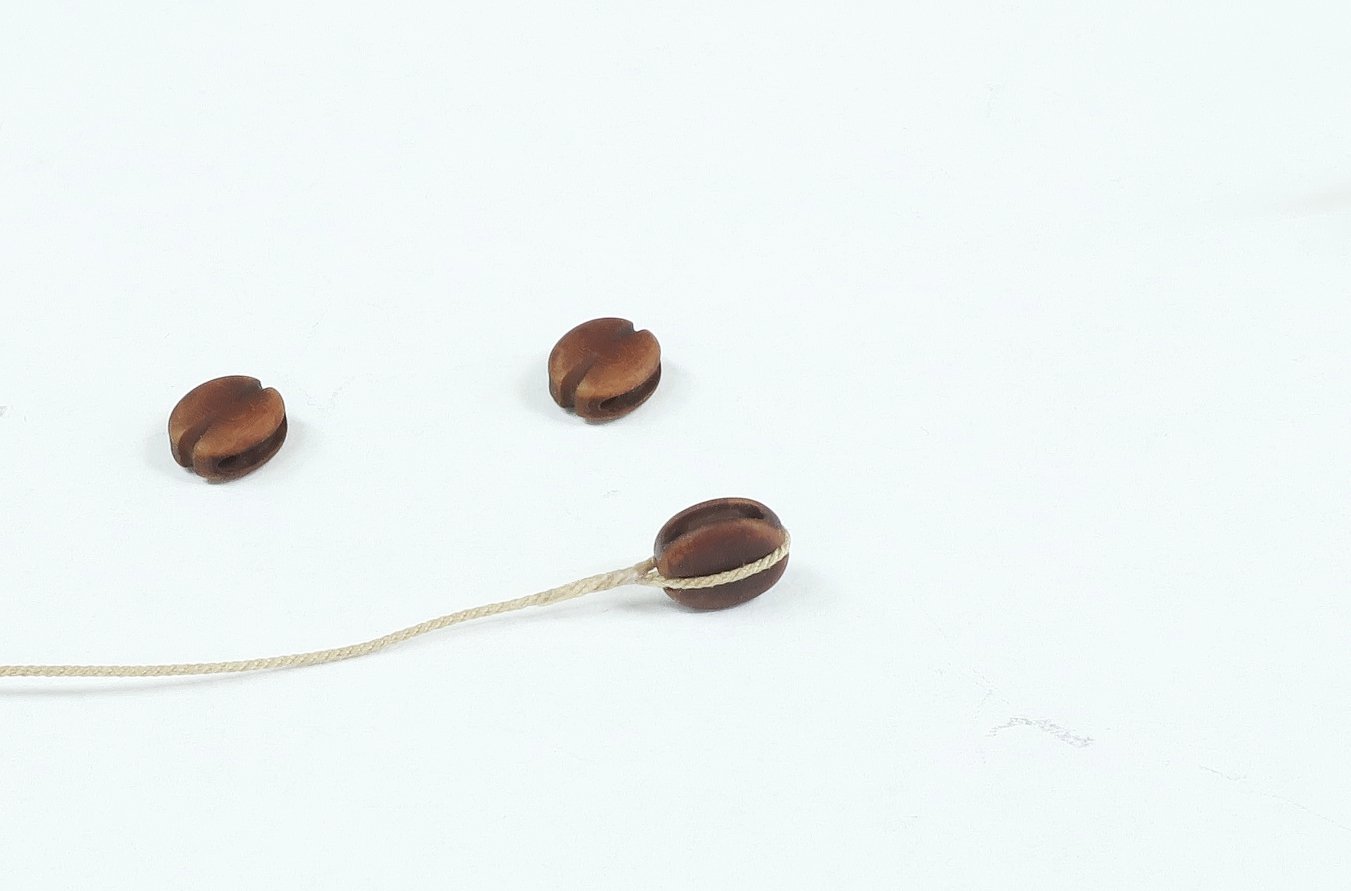-
Posts
9,676 -
Joined
-
Last visited
Content Type
Profiles
Forums
Gallery
Events
Everything posted by Chuck
-
Just a quick reminder.... JJ of Portland Scale Ship Company will be mfg some of kits and designs. He has my full permission to do so. To start he will be making chapter sets available for The Winchelsea group project here at MSW.... His website is almost completed. You will be able to buy all of the laser cut chapter sets containing the exact same parts....there will be no difference from those I previously offered. You will still be able to buy some chapter sets from me until they are all gone in addition to all of the fittings sold separately. But as I sell out of chapter sets, I will no longer be making any more of them. JJ will be taking over for me, making chapter sets in both Alaskan Yellow cedar and Cherry. So this group project is still open and accepting new members. Bulkhead sets will be available very soon. In addition JJ will be making the kits for my newly designed Capstan Project. It is another group project set up here at MSW. These are just about ready and I think another week or two and you will be able to buy this kit and start a build log. His website will eventually reflect that these projects are designed by me at Syren and made available with my full permission....You will see my name and logo on his website so please note that this is fully legot and authorized by me. More Syren kits and projects will be made available from Portland Scale Ship Co and Vanguard Models in the future. So none of my designs will simply go away. They will remain available and I am currently working with both of these guys to ensure their availability.
-
That looks excellent!! Nice job on the strop. One thing I would recommend is trying to strop that block exactly the same way but with smaller rope. Its perfect except the rope is a tad heavy for that size block. It will look great on the model.
- 38 replies
-
- crabbing skiff
- Chesapeake Bay crabbing skiff
- (and 2 more)
-

Triton by Jerzy
Chuck replied to Jerzy's topic in HMS Triton - 28 gun frigate's Cross Section Build Logs for HMS TRITON
Lovely work Jerzy -

My First and Ugliest Ropewalk
Chuck replied to vvvjames's topic in Rope Making/Ropewalks's Discussions about Rope Making
After…your completed length of rope. I edited the post. Also look or search for a topic titled Using Gutterman polyester mara thread for making rope. You will find recipes and instructions and experiences from other members there. -

My First and Ugliest Ropewalk
Chuck replied to vvvjames's topic in Rope Making/Ropewalks's Discussions about Rope Making
If you are using polyester rope it will always unravel unless you cook it in a toaster oven. not too hot…250 degrees maybe 275 for 4 or 5 minutes. Just tie a simple knot on each end when you cut it free from the rope walk and then wrap it around an empty tuna can. But wrap the tuna can with foil before you cook it. Some cans can stain the rope when cooked. No issues with a foil cover however. -

My First and Ugliest Ropewalk
Chuck replied to vvvjames's topic in Rope Making/Ropewalks's Discussions about Rope Making
Really nice rope....and I have seen worse looking ropewalks, LOL. Great job on that!!! -
Not really no....but that is a good practice. BUT I just use my finger to wipe away the excess. Keep in mind that I must stress that I use such small amounts....less than a drop really. There is never enough to use acetone on. I am talking about rigging of course. If you have a need to use acetone then my guess is you are using way too much CA. I mean just the tiny tip of a tooth pick is barely dipped into a few drops of CA squeezed out onto a scrap piece of wood. The tip of the toothpick is literally just a little wet with CA. Thats it. You dont need a lot of holding power as the ropes are not under extreme stress at all...that is unless you are one of those folks who tighten their rigging up like a drum, that it is so taught and with a lot of tension. There is just no need to do that and it isnt really good for you model. You shouldnt put your models under any stress because of rigging lines. Just tight enough that the ropes are about to sag on the verge of sagging...and the best possible result would be to leave a little sag in some lines because that looks so much more natural and life like. This is literally how much I use …and place it on a knot or faux splice. Excuse my 2 year old glue blob palette ..I just used my I - phone to take this video so I dont know if you guys can see it or play it. Maybe you can if you use your phone to look at it. IMG_2009.mov
-
that is the stuff...should work fine. its about the technique...use a very small amount...rubb it off with your fingers to avoid shiny dark stain immediately. Just practice. But one package of sing and double blocks and some poly rope and spend a half day just practicing stropping using different techniques until you get better at it. Whether its a faux splice or like the way I prefer as shown in my titorial. Or even other methods. But it really just takes practice and persistance. Chuck
-
For rigging with polyester ropes you do have another alternative. I havent tried this myself but I have seen guys use this in my local club with great success. I may give it a try when I have to rig my Speedwell. But folks have used either of these with great success. Gorilla Glue for fabrics including Polyester and Aleenes fabric glue https://www.amazon.com/Gorilla-Waterproof-Fabric-Ounce-3-Pack/dp/B0872K6DCH/ref=sr_1_3?dib=eyJ2IjoiMSJ9.WFZN5yUoY2QWmEP1SuCbZuFycRJehBZTfiKq8_5cBQIfI3O1WxS2TRWwlgQ-KzEsX1AdP-MenibRfH9CLTzthjeLFs8iNRVfGJjGDA2P98q54qXvAvwLuIqdMxpv_3mC0nu3UG1KDOP5PgqaFXEq4Kct2UbNjbk9K6fAz2fNQdVVn0T4RrbJr4VA6qkUXWnFCmkfNF2FzGEtuQi3t80cv-j11m_JyXYvp-VP3b-CGtw.nWgQih82cEOKNjvpdtFVannSnllcaIPqYdbccwV18qw&dib_tag=se&hvadid=598654564228&hvdev=c&hvexpln=0&hvlocphy=1022253&hvnetw=g&hvocijid=2174688025361693355--&hvqmt=e&hvrand=2174688025361693355&hvtargid=kwd-349454423456&hydadcr=4859_13229514&keywords=gorilla%2Bfabric%2Bglue&mcid=2215ab679dab3ffdb2906479b1e6c2b1&qid=1765385593&sr=8-3&th=1 And https://www.amazon.com/gp/aw/d/B00178QSE6/?_encoding=UTF8&pd_rd_plhdr=t&aaxitk=4018fba1a20e3dc1cee3ca9e8b855653&hsa_cr_id=0&qid=1765385908&sr=1-1-9e67e56a-6f64-441f-a281-df67fc737124&ref_=sbx_s_sparkle_sbtcd_asin_0_title&pd_rd_w=9zfJl&content-id=amzn1.sym.9f2b2b9e-47e9-4764-a4dc-2be2f6fca36d%3Aamzn1.sym.9f2b2b9e-47e9-4764-a4dc-2be2f6fca36d&pf_rd_p=9f2b2b9e-47e9-4764-a4dc-2be2f6fca36d&pf_rd_r=WEM0MMB8C1R95NHQV077&pd_rd_wg=DLyG2&pd_rd_r=c2f7c0e0-2814-41e1-b31a-344da3826268&th=1
-
Here is a faux splice like Greg mentioned using medium CA....Not clunky and not shiny or stained. It takes about 40 seconds if you prefer using a faux splice like this. This is Syren rope and blocks which is poly. Its really really about practice....and yes your fingers will get a bunch of CA on them but only a tiny drop is needed. Its just a matter of what you are more comfortable using. I will never say one glue is better than another. For me it is absolutely true that I prefer medium CA. But I have seen Greg use White glue in a way I could never. I could not achieve this same splice using white glue...I would need much more practice and yes cotton or linen rope instead.
-
I agree with everything Greg has said. Its really just a choice. But I do disagree about splices looking Clunky with CA. They can and should look exactly the same...it just takes practice. If you are more comfortable and used to using one glue over another, then of course one will look better than the other. But this is only because you are not as accustomed to using one over the other....hence the practice needed. I am partial to medium CA as the really thin stuff can be absorbed too much and spread as shown in the photos above on the wood. Those photos also show way too much glue being used and its just not needed. Just a little is needed and zero seepage occurs. I also use the medium CA on rigging all the time although very little. Very very little as you saw in my tutorial on stropping blocks. Its all about practice and choosing the correct density of CA. Chuck
-

HMS Triton (28 Gun Frigate) Group Build Project
Chuck replied to Chuck's topic in Group Projects on Model Ship World
This project is now free…just click on the group projects drop down at the top of the site. Its in the menu along the top of the page and you will see the Triton Groups. There is a downloads forum and a Build area forum. You can access them there. If you cant find them post in here and we will try and help you. https://modelshipworld.com/forum/39-hms-triton-downloads-area/ https://modelshipworld.com/forum/89-cross-section-build-logs-for-hms-triton/
About us
Modelshipworld - Advancing Ship Modeling through Research
SSL Secured
Your security is important for us so this Website is SSL-Secured
NRG Mailing Address
Nautical Research Guild
237 South Lincoln Street
Westmont IL, 60559-1917
Model Ship World ® and the MSW logo are Registered Trademarks, and belong to the Nautical Research Guild (United States Patent and Trademark Office: No. 6,929,264 & No. 6,929,274, registered Dec. 20, 2022)
Helpful Links
About the NRG
If you enjoy building ship models that are historically accurate as well as beautiful, then The Nautical Research Guild (NRG) is just right for you.
The Guild is a non-profit educational organization whose mission is to “Advance Ship Modeling Through Research”. We provide support to our members in their efforts to raise the quality of their model ships.
The Nautical Research Guild has published our world-renowned quarterly magazine, The Nautical Research Journal, since 1955. The pages of the Journal are full of articles by accomplished ship modelers who show you how they create those exquisite details on their models, and by maritime historians who show you the correct details to build. The Journal is available in both print and digital editions. Go to the NRG web site (www.thenrg.org) to download a complimentary digital copy of the Journal. The NRG also publishes plan sets, books and compilations of back issues of the Journal and the former Ships in Scale and Model Ship Builder magazines.



.jpg.c49d9c8263435689540c8720094f65c9.jpg)



